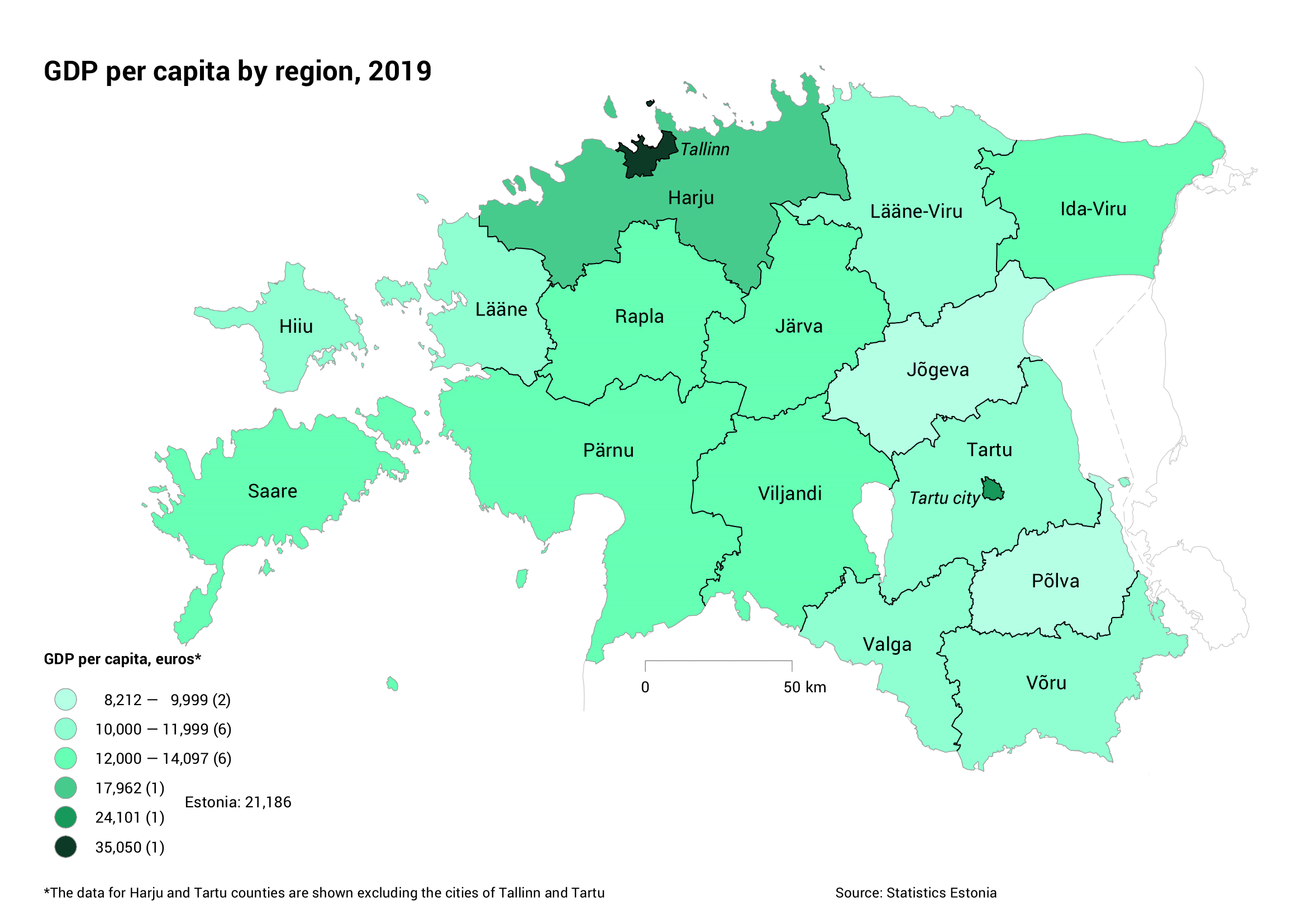The main driver of economic growth in 2019 was the service sector in Harju county
According to Statistics Estonia, in 2019, the gross domestic product (GDP) of Estonia at current prices was 28 billion euros. Harju county accounted for 18 billion euros of the GDP, whereas the city of Tallinn contributed 15 billion euros in that county.
Harju county was followed by Tartu and Ida-Viru counties which accounted, respectively, for 11% and 6% of Estonia’s GDP. Hiiu and Põlva counties held the smallest shares, as each contributed less than one percent of Estonia’s GDP.
According to Robert Müürsepp, leading analyst at Statistics Estonia, the service sector represented 72% of the Estonian economy last year. “The share of services is often used to assess the maturity of the economy. In Estonia, the share of services has grown consistently and is now the highest ever recorded for this sector in Estonia,” noted Müürsepp.
The cities of Tallinn and Tartu were the main contributors in the service sector and, as a result, services accounted for 80% of the value added in Harju county and for 72% in Tartu county. The share of services was the lowest in Ida-Viru (41%) and Lääne-Viru (42%) counties.
In 2019, industry and construction accounted for a quarter of the Estonian economy, which means a decrease by 2 percentage points year on year. The decrease was caused by the rising share of services as well as by a good year in agriculture, which led to a significant increase in the share of the agricultural sector in the Estonian economy. The share of industry was the largest in Ida-Viru county (58%), primarily due to the energy sector. Lääne-Viru county also stands out with a 47% share of the industrial sector. The share of industry and construction was the smallest in Harju (20%), Põlva (24%) and Tartu (25%) counties. In Harju and Tartu counties, it can be explained by the large share of the service sector, while agriculture was a key contributor in Põlva county.
The share of agriculture in gross value added was 3%. The agricultural sector held the largest share in Viljandi (18%) and Jõgeva (18%) counties, and the smallest share in Harju county (0.5%).
In 2019, GDP per capita was 21,186 euros, which is 1,566 euros more than the year before. GDP per capita was the biggest in Harju county, where it was 43 percentage points higher than the Estonian average. Harju county was followed by Tartu and Saare counties where GDP per capita was, respectively, 91% and 67% of the Estonian average. The smallest GDP per capita was recorded in Põlva county at 39% of the Estonian average. Each year, the differences between counties diminish. Over the last four years, Hiiu, Järva, Rapla and Tartu counties have made the fastest progress towards the Estonian average. The decreasing gap between Harju county and the Estonian average shows that the rest of Estonia is also getting closer to Harju county.
Statistics Estonia performs the statistical activity “National accounts” for the Ministry of Finance in order to determine how the Estonian economy is performing.
More detailed data have been published in the statistical database.
See also the national accounts section on our website.
For further information:
Kadri Kütt
Media Relations Manager
Marketing and Dissemination Department
Statistics Estonia
Tel +372 625 9181
